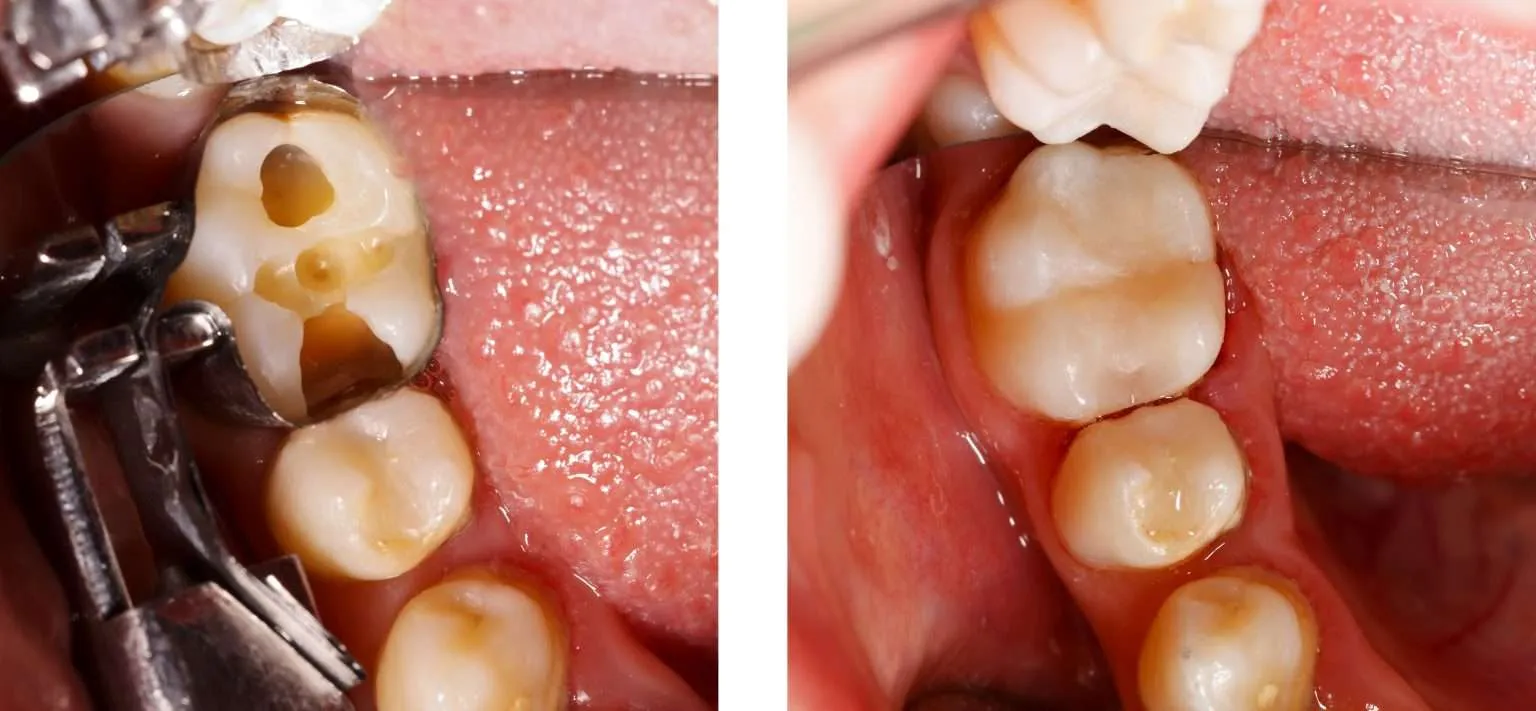One of the most common dental problems at any age is tooth decay, and a filling is needed to save the tooth at this point before the decay gets more complicated. However, a lot of the patients have the fear that this procedure will be painful. This is rare due to the advancements in dentistry. With the help of painkillers, this process is almost entirely painless for most people. In this article, we will be taking a closer look at what patients may expect before, during, and after a filling and how modern practices are transforming the patient experience, making it more comfortable than ever.
Understanding Tooth Fillings and Their Importance
Fillings are used to restore decayed or broken teeth by filling in cavities caused due to the creation of an acid solution when plaque and sugar come into contact. Bacteria release acids on the enamel that lead to tooth decay, as well as further weakening the tooth structure by forming cavities. Fillings protect against continued decay and restore the shape and function of a tooth. Filling materials are among the most versatile: silver amalgam, composite resins (white, tooth-colored fillings), ceramics, and even gold. Despite their durability and aesthetic differences, the filling process follows a similar procedure.
What Happens During a Filling Procedure?
The filling is a relatively simple process that can usually be completed in just one visit. The next key steps explain what to expect during this process. This detailed explanation can relieve your stress by giving you a sense of security and understanding before embarking on your treatment.
-
Numbing the Area
After the initial exam and x-rays, the dentist starts by giving an injection of a local anesthetic to numb the tooth and surrounding area. Before the injection, a numbing gel is usually placed to decrease any potential pain. This ensures you stay as comfortable as possible during the procedure.
-
Removing Decayed Tissue
After you get numb, your dentist will remove the decay with a special dental drill or laser. This step is essential to prepare the tooth for the filling, preventing further decay and ensuring a secure foundation for the new material. With this procedure, dentists can remove the affected parts, protecting as much of the natural tooth as possible.
-
Filling the Cavity
Once cleaned, the dentist fills the cavity with the suitable filling material and ensures that it contours well to line up with the surrounding natural tooth shape. The material is layered into place and cured with a light to create a long-lasting restoration. This technique ensures an excellent fit and takes into account your unique bite alignment.
-
Polishing and Adjusting
Once the tooth is filled, the dentist polishes it and checks your bite to ensure that it is living up to its standards. They may even ask you to bite down on special paper that will show colored marks that certain areas of your tooth cannot touch fully. After that, the filling is polished so that it has a smooth edge when you run your tongue over the back of your teeth.
So, Is the Procedure Painful?
A straightforward answer is no! Dental fillings are usually painless. The area becomes numb with the anesthetics, and therefore, pain is avoided during the process. Despite this, there are a couple of variables that will determine the discomfort that you end up experiencing. For example, a thin cavity typically causes little to no pain. Still, deeper cavities closer to the nerve of the tooth might require more anesthetic or pain management techniques. Additionally, larger fillings can also change the experience as they require more time and precision depending on where they are placed.
Pain Management Options During the Procedure
Today, dentists use several anesthesia and pain management solutions to give you an optimal experience. Local anesthetics work by numbing the tooth and surrounding gums to block pain signals, so you may feel numb while your dentist is performing this procedure. However, many people with anxiety or a low pain threshold could be looking for options like nitrous oxide (laughing gas) and sedation dentistry that offer another level of ease. The lasting painfulness or sensitivity that may remain after the numbing goes away is usually minimal. It can be treated with OTC pain medication.

Managing Mild Discomfort After a Filling
It is natural for some patients to feel slight sensitivity after a filling is applied. Changes in temperature or pressure can trigger this sensitivity. In the meantime, here are some tips for reducing discomfort.
- Steer clear of foods that are very hot or cold, as they can worsen sensitivity.
- Eat soft foods for a day or two, especially if your filling is extensive.
- If your teeth are still painful, over-the-counter pain relievers like ibuprofen or acetaminophen can give you some relief.
- It would be best not to bite on the filled tooth directly while you can feel delicate.
If you experience any discomfort or the sensitivity lasts over a week, contact your dentist to ensure that there are no complications. If pain persists, it should be assessed for a change, or in some rare cases, more treatment is required.
Modern Dental Technology and Pain Reduction
Thanks to the wonders of modern dentistry, treatments are short and painless, and dentists use innovative techniques in the field. One good example of such improvements is dental filling treatment. Systems like digital X-rays enable dentists to find cavities early, reducing the need for extensive procedures. In a few circumstances, laser dentistry is also possible, and it can remove any drilling altogether, minimizing pain and noise. Newer composite materials also help with better bonding to the tooth and usually require less tooth preparation, thereby preserving more of your natural, healthy tooth.
Addressing Common Patient Concerns About Fillings
Some of the concerns our patients face about dental fillings are the result of bad experiences, while others are based on common myths. Here are a few points to help clarify this for you:
- Those who have a needle phobia know that most dentists place a numbing gel before injecting the anesthetic, which makes it much more comfortable.
- Another issue is the noise and feeling of drilling, though this is less apparent now with quieter and smoother drills. Additionally, the majority of offices provide headphones to assist with creating a more peaceful setting.
- Finally, irregular sensitivity or even pain after minor dental surgery is rare and generally easily fixed with a follow-up appointment.
When to Seek Dental Care for Tooth Pain or Sensitivity
If you experience sensitivity to hot or cold foods, very sharp pain while biting down, or consistently visible spots on your teeth, then that may be a sign of tooth decay. Dentists can detect decay early and prevent it from worsening, sometimes avoiding the need for more invasive treatments. Routine visits can be an excellent preventative measure, as they could capture cavities at the start when fillings are actually smaller and much easier to carry out.
Preventing Cavities and Avoiding Fillings
The last step is to brush, floss, and maintain good oral hygiene practices every day! Preventive care and good oral hygiene can help prevent cavities, which otherwise entail specialized dental treatments or fillings. Regular brushing with fluoride toothpaste, flossing, and using mouthwash can also help protect your enamel from decay-causing bacteria. You must also visit the dentist regularly, as professional cleanings and exams can catch problems before they result in permanent damage to your teeth.
Final Thoughts
Modern dental care means the majority of people who are getting a filling can generally get it completed with minimal discomfort or pain. Nervousness about dental procedures is completely normal, but knowing what to expect in advance and finding effective strategies for pain management can help ease your anxiety. Your comfort is one of our most important goals at Langley Dental Group, and we are here to make your experience as easy and breezy as possible. We would also be glad to address any questions or discuss more options for pain control during your appointment so you can walk out excited about finally getting a healthy smile back.




